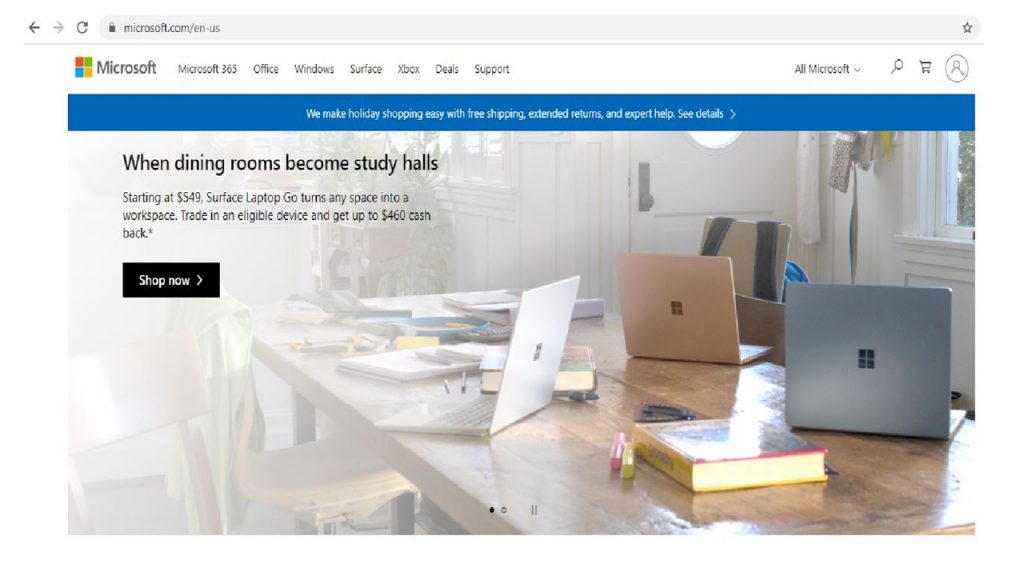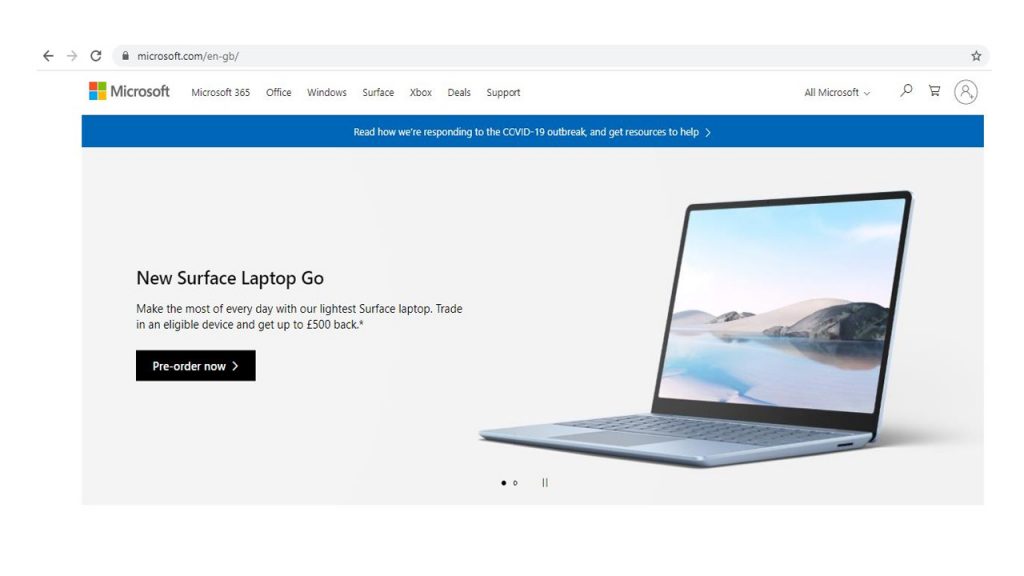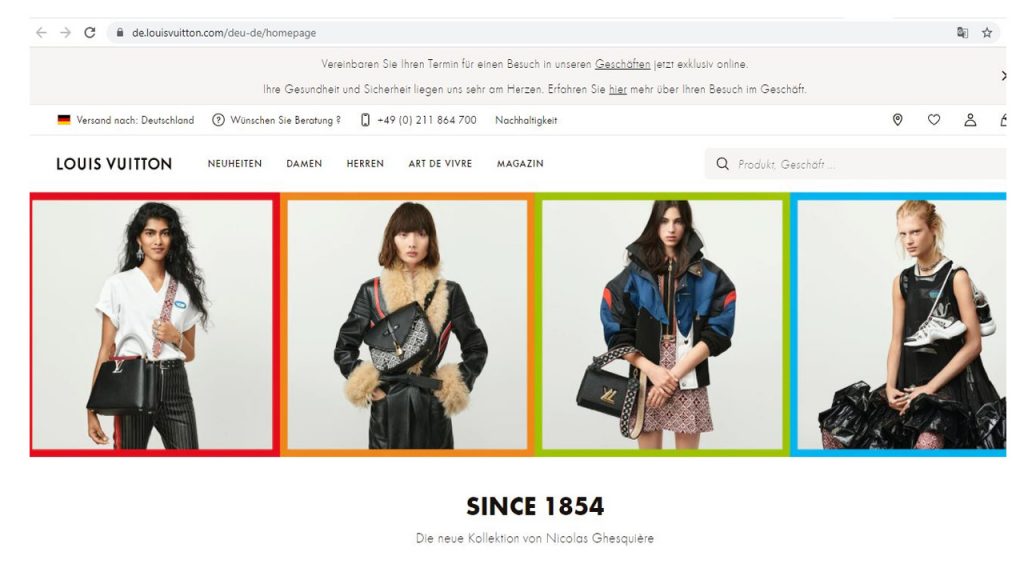What is Content Localization and How is Localization Key to Building Your International Audience
“Pepsi brings your ancestors back to life” in Chinese characters was a product of mistranslation sometimes ago of the brand’s slogan that actually says “Come Alive with the Pepsi Generation.” Another similar example is that of Coca-Cola. At the point of launching, it was discovered that their supposed interesting motto has been mistranslated to “female horse stuffed with wax” or “bite the wax tadpole” as the case may be with any of the dialects in Chinese. After careful examination, there was need for rebranding the name and slogan to suit the purpose and reputation of the brand. Therefore, they opted for “kekoukele” that is “happiness in the mouth” or “tasty fun”.
![]()
The examples above show that there used to be mistranslation not only in brand names or motto but generally when translating from one language to another. That is why content localization is vital. Content localization means trying to adapt or tailor your content to a specific location so as to relate and identify with the audience in the location. This goes beyond just rendering words from a source language in into the targeted language. It involves ensuring that your contents are tabled in such a way that it considers local cultural sensitivities. This makes sense because there are differences in the needs and interests in one culture from another culture.
It will not be wise to use the same approach for each and every locations you are targeting around the world because this will not present your brand to all the way it should. For example, the current trends in one geographical location may be far away from what is trending in another geographical location. In fact, that is where discrepancy in languages takes effect.
There are varieties of languages today. Many of the consumers who are users of these languages prefer to relate with brands in the language of their heart. As if that is not enough, a research suggests that the percentage of consumers who will not buy products because it is not in their language is 40% while some 65% said they prefer to relate with contents in their own language.
In the localization process, translation from one language to another is the number one step. This is because localization is more than translation and it involves creating unique contents and experience that local consumers in your target market can quickly relate to. When you do this, you will not only create but you will be building sustainable local consumers all around the globe.
Now, let us delve more into what localization is.
What is content localization?
Content localization is a comprehensive process that goes beyond the simple act of translation. It involves not only converting the language of your content but also adjusting and customizing it to resonate with the target audience’s unique cultural, social, and emotional needs. This process ensures that your brand’s message is not just understood, but also received positively and appropriately, making it relevant to the local context.
The Layers of Content Localization
- Translation: This is the starting point of localization, where the original text is translated into the target language. However, translation is not just about replacing words with their equivalents; it’s about ensuring that the meaning of the original message remains intact. The translation should capture the nuances of the language, while respecting local expressions, idioms, and cultural references. For instance, a slogan or phrase that works well in English might not have the same impact in another language due to differences in tone, humor, or word choice. This is why professional translation services, especially those that specialize in localization, are crucial.
- Cultural Adaptation: This step involves tailoring your content to the local culture. Different cultures have varying social norms, values, and expectations. The content should reflect these differences to ensure that it resonates with the local audience. This could involve changing references to local events, holidays, or traditions that might be unfamiliar to a foreign audience. For example, a marketing campaign that uses references to American Thanksgiving might need to be adapted for markets in regions that don’t celebrate the holiday. Additionally, certain colors, symbols, or imagery that are deemed lucky or auspicious in one culture may be associated with bad luck or negative connotations in another. Thus, cultural sensitivity is key in content localization.
- Tone and Voice Adjustment: The tone and style of your content play an important role in how it is perceived by the target market. A friendly, conversational tone may work well for one audience, while a more formal or authoritative tone might be more effective in another. It’s important to adapt the voice of your brand to match the preferences of the audience. For example, British English and American English might share the same language but differ in tone—while the British may prefer a more formal, understated approach, Americans may gravitate towards a more casual, direct style.
- Visual and Design Customization: Localization isn’t just about language—it also involves adjusting visual elements such as images, graphics, colors, and design to better suit the cultural preferences and expectations of the target market. For example, a marketing campaign that works well in one region might need to change its visual elements if it is being launched in a market with different tastes. This could include adjusting colors, choosing culturally appropriate imagery, or even modifying the layout of a website or app to better align with local design preferences. In some cases, certain images or symbols may even need to be avoided if they carry unintended negative meanings in the local culture.
- Legal and Regulatory Compliance: Different markets have different laws, regulations, and standards that govern advertising, product descriptions, and content. Localizing content also involves ensuring that it complies with these legal requirements. This could mean adhering to advertising standards, respecting intellectual property rights, or incorporating disclaimers that are necessary for certain markets. For example, certain health-related claims might be allowed in one country but banned in another. Thus, it’s important to adjust your content to meet these legal requirements while still conveying your message effectively.
Reasons localization is key to global growth. The more consumers feel connected to your brand the more they are willing to spend
Localization is a crucial strategy for companies seeking to expand their global footprint and connect deeply with local consumers. The connection consumers feel with your brand directly influences their purchasing decisions. When people feel truly understood, respected, and emotionally aligned with a brand, they are more likely to become loyal customers, willing to spend more. Research supports this, showing that 57% of consumers are more willing to increase their spending once they feel connected to a brand, and 76% of consumers will choose a brand they feel connected to over its competitors.
Building Connection with Consumers
Establishing a strong connection with your audience is the foundation for growth. It’s not just about selling a product or service; it’s about forming a relationship. When customers feel connected to a brand, they feel understood, valued, and comfortable. This emotional bond can significantly influence their willingness to invest in your brand, both financially and in terms of loyalty.
To achieve this connection, businesses must create content that speaks directly to the needs, interests, and preferences of the local audience. Content should demonstrate genuine interest in the consumers’ values, culture, and lifestyle. By doing so, you communicate respect for their individuality, fostering trust and rapport.
Why Localization Matters: A Global Example
The impact of localization can be illustrated through simple yet telling examples. For instance, imagine trying to publish a South American-centric eBook for an audience in the Asia-Pacific region. Such an approach would be disconnected from the audience’s interests and cultural relevance. The same issue arises when trying to introduce Asian-Pacific content to an African audience or vice versa. These markets are diverse, with distinct cultural values, and publishing content that doesn’t resonate with local norms or expectations leads to irrelevance and disengagement.
Localization ensures that your content is relevant and tailored to the specific interests and needs of your target market. As the old saying goes, “One man’s treasure is another man’s trash”—content that works for one region may fall flat in another. That’s why creating content that aligns with the audience’s local context is key to successful market penetration.
Strategies for Effective Localization
Here are key strategies for creating localized content that builds genuine connections with your target audience:
1. Consider your choice of word:
Language is powerful, and even subtle differences in word choice can impact how your message is received. Words and phrases can vary greatly between regions, even within countries that share the same language. For example, British English uses “football,” while Americans use “soccer.” If a British customer visits your website and notices an abundance of “soccer” references, they may quickly feel that the content isn’t meant for them.

Companies like Microsoft localize their website slightly between the US and the UK, showcasing content that appeals to each country’s language preferences.

2. Insert local music culture references:
Cultural references, including music, celebrities, memes, and trending topics, are powerful tools in making your content resonate with local audiences. Music, in particular, is deeply tied to a region’s identity and plays a major role in shaping cultural conversations. For example, referencing popular local musicians or music festivals can instantly establish a connection with an audience, as it shows that you are familiar with and appreciate their cultural preferences.
However, these references can vary widely across regions. What is trending in Europe may be completely unfamiliar to an audience in Asia. A meme that resonates with one group might be lost on another. This is why it’s essential to conduct thorough research into local trends, including music, memes, and celebrity culture, to ensure that your content feels timely and relevant.
3. Share pertinent stories:
Storytelling is a fundamental part of human culture, and when tailored to local audiences, it can forge deep emotional connections. To engage your target audience effectively, it’s important to share stories that reflect their culture, values, and experiences. This personalization makes the content feel relevant and shows that you understand the local context.
For example, if your content is aimed at an African audience, incorporating African names, landscapes, and cultural practices can make your stories feel more authentic. It’s also important to consider local social dynamics, family structures, and values when crafting your narratives. Stories that showcase local heroes or tackle issues that matter to the region, such as education, sustainability, or entrepreneurship, can also resonate deeply with the audience.
Taking a cue from luxury brand Louis Vuitton, the company localized its website and marketing efforts to resonate more with German and Dutch consumers, even though English is widely understood. By localizing the language and making the content more culturally specific, Louis Vuitton saw increased conversion rates in those regions. This approach highlights the importance of not just translating content but adapting it to reflect the local culture and preferences, increasing the relevance of the brand for local audiences.

4. Maintain deep relationship with your loyal customers:
Loyal customers are among the most valuable assets a brand can have. They do more than just make repeat purchases—they become brand advocates who share their positive experiences with friends, family, and social networks. This word-of-mouth marketing is invaluable, as it comes from trusted sources and can lead to increased brand awareness and sales.
To foster loyalty, it’s crucial to maintain a strong relationship with your customers, especially across different regions. This relationship goes beyond simple transactional interactions; it’s about providing continuous value, showing appreciation, and staying connected through personalized communication. Loyal customers are often more forgiving of mistakes and are more likely to give your brand another chance if you continue to show that you care.
Building a loyal customer base requires regular engagement through localized emails, offers, and loyalty programs that cater to the unique needs and preferences of customers in different regions. In turn, these customers will advocate for your brand, helping to build credibility and trust in new markets. They can also help spread your message through online reviews, social media posts, or by simply recommending your products to others, which in turn drives growth.
5. Appear in local search results:
Search behavior varies significantly across different regions. People in various locations use distinct phrases and terms when searching for products or services. If your website isn’t localized to reflect these regional search behaviors, your visibility in local search results will be limited.
Using the example of “football” and “soccer,” if you’re targeting an American audience and your content uses the term “football” (which is commonly used in Europe), your American audience may never find your website when they search for “soccer.” By properly localizing your content and incorporating region-specific keywords, you increase the chances of ranking well in local search results and driving traffic to your site.
Localizing content doesn’t just mean translating text—it also involves adjusting the keywords, phrases, and even the structure of your content to match local search trends. Understanding the terms and expressions that are commonly used in each market is essential for improving your search engine rankings and ensuring that your content reaches the right audience.
6. Make provision for a personalized shopping experience:
A personalized shopping experience is critical to converting visitors into loyal customers. One of the major barriers to online purchases, especially in global markets, is trust. If your website doesn’t support the payment methods commonly used in the target market, you risk losing customers who prefer to shop with payment gateways they know and trust.
For example, Boleto Bancário is a popular payment method in Brazil, and if you don’t offer this payment option, Brazilian customers may abandon their carts in favor of brands that do. By offering a variety of localized payment methods, such as mobile wallets, local bank transfers, or regional credit cards, you increase your chances of securing a sale.
Personalization goes beyond payment methods—it extends to the entire shopping experience. Localization means adapting your website’s language, currency, product offerings, and even shipping options to suit the preferences of the local market. For example, in some countries, customers may prefer free shipping options or quick delivery, while in others, they may prioritize secure payment methods or local customer support. By addressing these specific needs and preferences, you create an environment where customers feel comfortable, respected, and confident in their purchase decisions.
The Next Steps in Localization: Starting Your Journey
Embarking on a localization journey is a pivotal step for businesses looking to expand their reach and connect with diverse audiences around the world. While the process can seem daunting, it doesn’t have to be. With the right approach and tools, such as ConveyThis, you can efficiently and effectively tailor your content for specific markets, enhancing your global presence. Here’s a more detailed breakdown of the next steps to guide you through your localization process:
1. Analyze Your Target Markets
The first step in your localization journey is understanding the markets you are targeting. Localization isn’t a one-size-fits-all process—it requires a deep understanding of the cultural, linguistic, and social nuances of the regions you want to reach.
- Cultural Preferences: Every market has its own set of cultural values, traditions, and norms. For example, humor or imagery that resonates in one country might be misunderstood or offensive in another. By conducting research into the local culture and consumer behavior, you can ensure that your content aligns with local customs, values, and expectations.
- Linguistic Considerations: Language is at the core of localization, but it goes beyond mere translation. Pay attention to dialects, slang, and regional variations of the language. For instance, Spanish spoken in Mexico may differ significantly from Spanish spoken in Spain. Being aware of these differences and adjusting your content accordingly ensures that your message is both clear and culturally relevant.
- Social Trends: Understand the social trends that shape each market. This includes popular topics, current events, and emerging movements. For instance, an environmental campaign may be more effective in countries with a strong focus on sustainability, whereas other markets may have different priorities. By aligning your content with these trends, you can engage your audience more meaningfully.
2. Invest in the Right Tools for Localization
Using a reliable and efficient localization platform, such as ConveyThis, can make the process significantly smoother. Tools like these offer various features that simplify content translation, ensure consistency, and automate much of the work involved in localizing your website and marketing materials.
- Automated Translation: ConveyThis and other localization tools can help you translate your content quickly and accurately. By using machine translation as a starting point, followed by human review and adjustments, you can ensure both speed and quality in your content delivery.
- Multi-language Support: Localization platforms offer the ability to manage multiple languages and regions simultaneously. This enables you to easily scale your efforts and manage translations across various languages without losing track of which content has been adapted for which market.
- Consistency Across Markets: Maintaining a consistent brand voice and messaging across different languages and regions is crucial. Localization tools help preserve your brand’s tone and style while adapting the content for local preferences. This consistency reinforces your brand identity and builds trust with your audience.
3. Adapt Content to Local Needs
Once you’ve gathered insights on your target market and selected the right localization tools, it’s time to tailor your content to meet local needs. This goes beyond simple translation and extends to adapting the content for cultural relevancy.
- Visual and Graphic Adjustments: Colors, symbols, and images can have different meanings in different cultures. Ensure that the visuals used in your content align with the local culture and do not unintentionally cause offense. For instance, colors that symbolize good luck in one country might represent misfortune in another.
- Localize Product Offers: Different markets have different demands. For instance, the products or services that appeal to a North American audience might not be relevant or desirable in the Middle East or Asia. Localizing your product offerings, promotions, and even pricing strategies can help you better meet the needs of each region.
- Localized User Experience (UX): A positive user experience is key to retaining customers. Consider local preferences in the design and navigation of your website. For example, in some regions, right-to-left text direction is preferred, or specific payment gateways might be necessary for a seamless transaction process.
By following these steps and using tools like ConveyThis, you can start your localization journey with confidence. Localization is not just about translation; it’s about creating a more personalized and engaging experience for your global audience. When done well, localization can unlock new opportunities, strengthen customer relationships, and drive growth across borders.
Conclusion:
In conclusion, the examples of Pepsi and Coca-Cola’s mistranslation serve as stark reminders of the crucial role content localization plays in a brand’s success. These cases highlight how easily a lack of cultural awareness and linguistic precision can lead to misunderstandings, tarnished reputations, or even failure to connect with a potential customer base. They underscore that localization goes far beyond mere translation of text—it’s a comprehensive process that requires a deep understanding of local cultures, social norms, and consumer preferences.
Localization is essential not only for conveying your message clearly but also for adapting your brand identity, tone, and overall experience to resonate with the emotions, values, and expectations of the target audience. It’s about crafting a message that feels authentic and relatable, ensuring that your brand communicates directly with consumers in ways that feel personal and meaningful. The goal is to establish a genuine connection, where customers not only understand your message but also see your brand as a valuable, trustworthy entity in their lives.
When approached thoughtfully and strategically, content localization has the power to unlock immense global opportunities for businesses. By tailoring your offerings to the specific cultural and linguistic needs of each market, you can foster deeper relationships, build customer loyalty, and encourage long-term engagement. Whether it’s through adjusting visual elements, adapting tone, or offering region-specific content, localization provides a platform for brands to make a lasting impact.
Moreover, the benefits of localization extend far beyond just creating content in different languages. It’s about crafting an entire customer experience that speaks to the unique characteristics and expectations of each region. From user interface design to payment methods and marketing campaigns, every aspect of your brand’s touchpoint should reflect the values and preferences of local consumers.
Brands that invest time and resources into this process are positioning themselves for sustained growth and success on a global scale. Localization empowers companies to not only increase conversions and expand their market reach but also gain a deeper understanding of their global customers. This knowledge and insight pave the way for continuous improvements, future market penetration, and the cultivation of a loyal customer base that feels genuinely connected to your brand.
Ultimately, localization is a powerful tool that can help brands differentiate themselves in competitive global markets. It’s an investment in understanding and serving diverse consumer needs, ensuring that your brand resonates and thrives in every market you enter. The success stories of brands that have embraced localization demonstrate that this strategy is no longer optional but a necessity for any company looking to expand internationally and build long-term, meaningful connections with customers around the world.
Additional Resources:
- ConveyThis Integrations – To explore compatibility with WordPress.
- How to Translate WordPress – For more guidance.
- Help Guide for Translating WordPress Websites – For step-by-step support.
- A Relevant Article by Alexika – To learn more of the topic.
Translation, far more than just knowing languages, is a complex process.
By following our tips and using ConveyThis, your translated pages will resonate with your audience, feeling native to the target language.
While it demands effort, the result is rewarding. If you’re translating a website, ConveyThis can save you hours with automated machine translation.
Try ConveyThis free for 3 days!
 No card details
No card details



